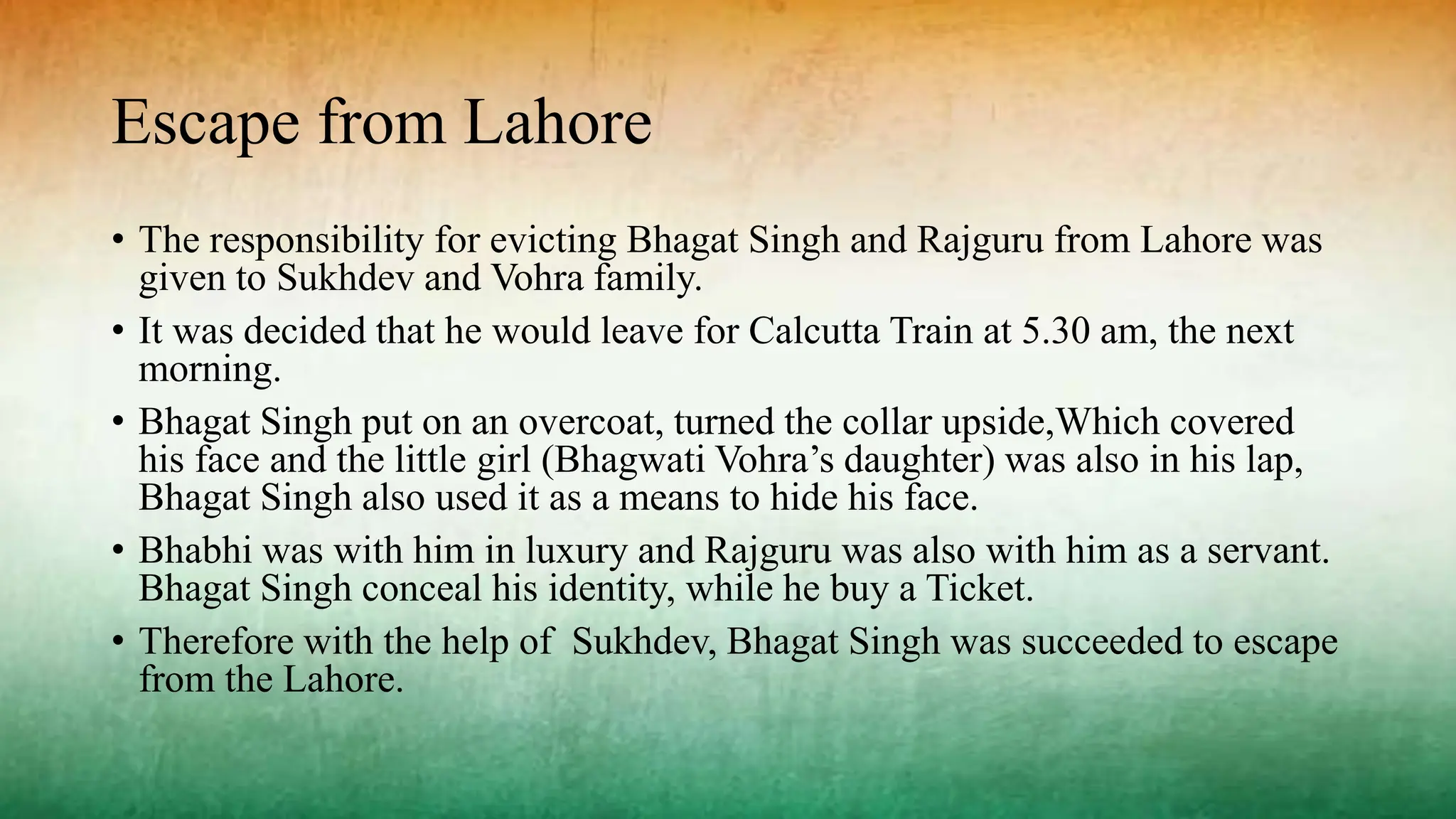Bhagat Singh was a revolutionary Indian freedom fighter who sacrificed his life for India's independence at age 23. He was inspired to join the independence movement after events like the Jallianwala Bagh massacre. As part of his revolutionary activities, he assassinated a police officer named Saunders in 1928 to avenge the death of Lala Lajpat Rai. He later bombed the Delhi Assembly to protest unfavorable legislation but stayed at the scene and gave speeches instead of fleeing. Bhagat Singh and his associates went on hunger strikes in prison to demand better treatment of political prisoners. Despite appeals, he and two associates were hanged in 1931 after being denied a fair trial by a special tribunal, making him a













